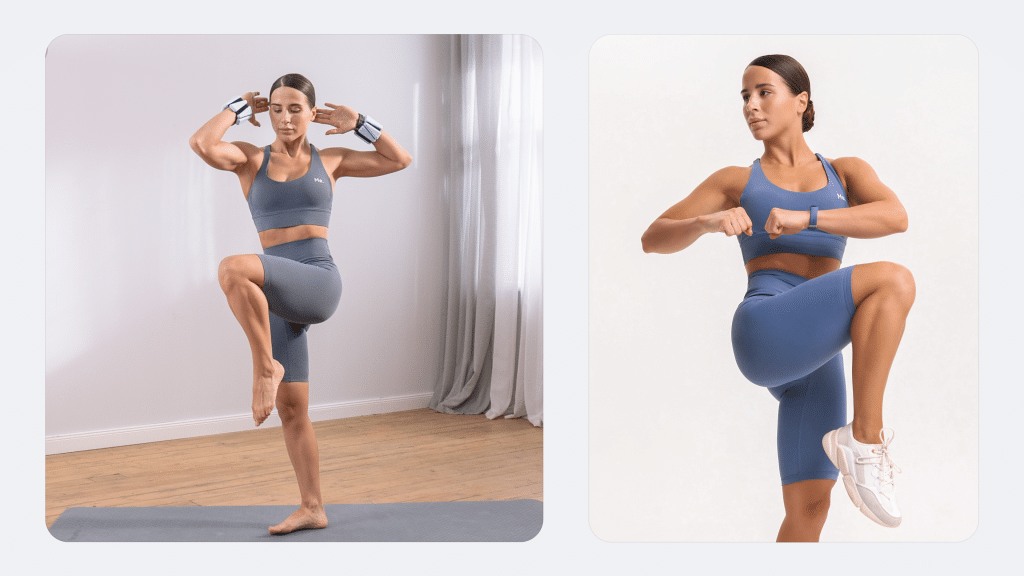You’re probably familiar with Kegels. They are often recommended to help strengthen your pelvic floor muscles. But have you heard about reverse Kegels?
As the name suggests, they are the opposite of the standard Kegels. Reverse Kegels help relax your pelvic muscles. When done in the right way, reverse Kegels have many benefits.
Let’s take a look at how to do reverse Kegels and why they’re good for you.
What Are Reverse Kegels?
Reverse Kegels are a simple exercise that works the muscles in the pelvic floor region. They relax, lengthen, and stretch the pelvic floor muscles. Reverse Kegels can be done by both women and men, but have different effects in either sex.
Levator ani is a broad muscle that supports the pelvic floor and provides its bulk strength. It is comprised of 3 major muscles: the pubococcygeus, puborectalis, and iliococcygeus (11).
The main functions of the pelvic floor muscles are (11):
- Supporting the abdominopelvic viscera, including the bladder, colon, and uterus.
- Offering resistance to intra pelvic/abdominal pressure increases; pelvic floor muscles offer resistance to pressure increase when coughing or performing activities such as lifting heavy material.
- Allowing urinary and fecal continence. The pelvic floor muscle fibers have a sphincter action on the urethra and rectum that relaxes to allow urination and defecation.
A weak pelvic floor can cause a range of issues. In females, these muscles support the vagina uterus and the anal canal (9).
As much as it may seem impossible, your pelvic muscles may be too tight (7). When your muscles are too tight, you may experience painful sex or muscle spasms. This is where reverse Kegels come in – they help relax and lengthen your pelvic floor muscles. For women who experience painful sex or chronic constipation, relaxing the pelvic floor muscles can significantly reduce the pain.
Difference Between Kegels and Reverse Kegels
Kegels are incredibly common, and many trainers swear by them. The lesser-known reverse Kegels are also great. Kegels and reverse Kegels both work the pelvic floor muscles but have different impacts. Both Kegels and reverse Kegels have great benefits.
Kegels strengthen muscles of the pelvic floor, which support your bladder, rectum, and the womb in women (3). Research has shown that kegel exercises help increase pelvic strength in women with urinary incontinence (2).
As the name suggests, reverse Kegels are the opposite of Kegels. During a Kegel workout, you tighten the pelvic floor muscles. However, during a reverse Kegel workout, you relax these muscles instead of contracting them. A combination of normal Kegels and reverse Kegels gives you better results over a short period as opposed to doing only Kegels.
Read More: Home Pilates Workout: Strengthen Your Core and Ease Lower-Back Pain with 9 Exercises
How to Properly Do Reverse Kegels
Although men and women perform this exercise differently, the purpose is still the same. You’re relaxing and stretching your pelvic floor muscles. Ensure you practice the correct form so you get the most out of this exercise. At first, doing reverse Kegels may seem difficult, but with time and practice, it becomes easier.
Here’s how to do Kegels and reverse Kegels:
How to Perform Reverse Kegels for Men
- You can do this exercise while standing, sitting, or lying down on your back with your knees bent.
- Once in the position of your choice, contract your muscles as though trying to urinate faster. Doing this relaxes your perineal muscle and eases the pressure from your prostate.
- Release the muscles of your anus and feel your whole perineal body move downward. Lift your testicles and penis slightly while contracting your front penile muscles. You should feel more space between your pubic bone and tailbone as they stretch apart.
- Hold the reverse Kegels for 5 seconds, then release for 5 seconds also. Once you’ve mastered this movement, you can try holding for a longer period.
- Breathe as deeply as you can during the entire routine.
How to Perform Reverse Kegels for Women (12)
- Choose the position you want to do the reverse Kegels in. You can stand, sit, or lie on your back with your knees bent.
- Once you’re in position and are comfortable, take a deep breath and bring your focus to your pelvic floor.
- Feel your pelvic muscles relax, then drop down while you inhale. You can use a mirror to monitor your movement if you wish.
- Your anus releases and the space between the anus and vagina will move downward. You should feel your tailbone and pubic bone expanding.
- Hold the reverse Kegel for 5 seconds, then release for 5 seconds. Once you’ve mastered this movement, you can try holding for a longer period.
- Perform two to three sets of 10 reverse Kegels throughout the day.
Start with about 3 sets a day and gradually start to do more. Once your muscles are stronger, you can hold the reverse Kegel for a longer duration. Remember, the secret to getting the most out of reverse Kegels is practicing the correct technique. Don’t do reverse Kegels while you’re practicing any form of core workout.
How soon you will start to see results varies from one person to another. In some, it may take weeks, while in others, it may take months before you see results. It’s important to have some patience and stay consistent. You can also mix things up and do other pelvic floor exercises together with reverse Kegels.
Precautions to Take when Doing Reverse Kegels
While doing reverse Kegels, it’s essential to ensure that you perform the exercise correctly to reap the maximum benefits from the workout and avoid any injuries or worsening symptoms you wish to ease. Below are a few things you should keep in mind during a Kegel workout:
Practice Proper Breathing Technique
Make sure that you’re breathing properly during this routine. It’s crucial to breathe deeply through your stomach and not just through your chest. As with other exercises, it’s important to gradually increase the intensity. If you don’t, your muscles will become sore and rigid, and you may experience pain.
Don’t Overwork Your Muscles
Ensure you don’t overexert your muscles and that you’re not straining as this can be disastrous (4). Make sure you rest your muscles and don’t hold the reverse Kegel position for too long if your body can’t handle it. Do only what your body can handle and only increase the duration and frequency of your workouts once your body can handle more.
Empty Your Bladder Beforehand
As reverse Kegels are all about relaxing your pelvic muscles, you should go to the bathroom before a reverse Kegel workout. Relaxing the pelvic floor muscles may be difficult with a full bladder.
Read More: Ab Workout for Women: 8 Must-Have Exercises for a Strong Core
Listen to Your Body
It’s important to pay attention to your body and listen to what it tells you. If you feel any pain or discomfort during a reverse Kegel exercise session, discontinue the workout for a while and rest. If the pain persists, you should consult your doctor to see how best to work to ease the pain.
You could also talk to a fitness expert as you may be experiencing pain due to using the wrong technique.
See a Physical Therapist First
While it’s true that there is a connection between pelvic health and reverse Kegels, it can be dangerous to self-medicate without proper guidance. Therefore, you should visit a physical therapist before you try to fix the problem yourself, be it incontinence or pelvic pain.
This is because while exercises may be helpful, there are other techniques such as physical and massage therapy that may also be necessary. In some cases, reverse Kegels won’t offer complete relief for pelvic pain. There are several therapies in addition to exercise that are used for treating pelvic floor dysfunction (1).
Benefits of Reverse Kegels
Reverse Kegels have several benefits for men and women. For proper functioning of the organs within the pelvic region, you need strong muscles. The most known benefit of Kegels and reverse Kegels is the impact they have on your sex life (10).
Together with standard Kegels, reverse Kegels help strengthen the pelvic floor muscles. Having a strong pelvic floor helps prevent constipation, urine, and fecal incontinence. It also helps prevent the prolapse of pelvic organs, including the vagina and uterus, that is common after childbirth.
In addition, reverse Kegels help relieve pelvic tension and muscular imbalance, while improving hip stability and lower-back strength.
If you struggle to even flirt with the idea of giving up your favorite foods or working out till your legs give way – BetterMe app is here to breathe a fresh perspective into the way you view the weight loss process! Check out the app and experience the fun side of fitness and dieting with BetterMe!
Below are the benefits of doing reverse Kegels:
Benefits of Reverse Kegels For Women
Sex
These exercises are particularly beneficial for women with dyspareunia (painful sexual intercourse). Dyspareunia is described as recurrent or persistent pain, which occurs before, during, or after sexual intercourse (5).
Relieves Pelvic Pain
If you experience pelvic pain, reverse Kegels may be of great help. This exercise helps relax the muscles, thereby helping to ease the pain. Be careful not to overwork your muscles – the goal is to relieve your pelvic pain, not to worsen it.
You should keep in mind that overexerting your muscles may cause pain and muscle soreness. Discontinue these exercises if you experience any pain and talk to your doctor about other remedies that could help with the pain.
Beneficial when Preparing for Childbirth
Frequently doing reverse Kegels gives you greater control of your pelvic floor muscles. This workout may be beneficial for pregnant women as it helps individuals learn how to ease tension in the pelvic floor. This can come in handy during delivery, and because you can let go during childbirth, labor is smoother (10). Tearing may also be minimal.
Benefits of Reverse Kegels For Men
Increase Strength and Control in the Penile Muscles
Reverse Kegels for men help strengthen and increase control of the penile muscles. It may also help men who suffer from premature ejaculation and erectile dysfunction (8), which means better sexual function.
One small study involving 40 men with erectile dysfunction found that pelvic floor rehabilitation exercises helped treat premature ejaculation (6). Rehabilitation exercises are a more affordable alternative to costly treatment that involves selective serotonin reuptake inhibitors.
To get maximum results for improved sexual function, you can combine reverse Kegels and traditional Kegels.
Helps Relieve Pelvic Pain
As reverse Kegels lengthen and relax the muscles in your pelvic floor, they help ease pelvic pain if you’re experiencing any pelvic pain or cramping. For pain, avoid traditional Kegels and do reverse Kegels instead.
The key is to do what you can manage and not to overstretch your muscles. Performing 3 sets of 10 a day should be enough. Only do more reps if your body can handle it.
Do You Need to Learn Standard Kegels First?
You may find it helpful to learn how to do standard Kegels first. This may help you locate your pelvic floor muscles, which are activated during a reverse Kegel.
For most people, letting go of the pelvic floor muscles may feel similar to the release you feel when you urinate or have a bowel movement. This is why it’s important to empty your bladder before this exercise.
Once you’re ready, focus on your pelvic floor as you breathe in. As you inhale and fill your body with oxygenated air, your pelvic floor muscles and diaphragm should lower.
Here are some tips to help you locate your pelvic floor muscles:
For Females
You can locate your pelvic floor muscles by imagining that you’re stopping urination midstream (3). Don’t squeeze your muscles while you’re actually urinating, but you can do so when trying to locate these muscles.
Another method you can use is to place a clean finger inside your vagina. You can do this while standing, lying down, or sitting. Simply find a position that works for you. Once you’re in position, tighten your vaginal muscles around your finger and pay attention to how these muscles feel as you squeeze them. The contractions should move onwards and upwards.
Once you locate the muscles, hold for approximately 5 seconds, then release for 5 seconds. With time, you can increase the hold and relax time to 10 seconds each. Make sure you’re not squeezing or holding for very long as this can fatigue the muscles and make them rigid.
For Males
Men can also locate these sets of muscles by imagining they’re stopping urination midstream. Don’t squeeze your muscles while urinating. However, you can do it when trying to locate your pelvic floor muscles.
Don’t tighten your abdomen, back, and glutes. Your sides should be relaxed, and you should inhale deeply and evenly throughout the routine.
You can do Kegels while sitting, standing, or lying down with your knees bent. Squeeze and hold your pelvic floor for approximately 10 seconds. Let go for about 5 seconds between reps. You can do 3 sets of 10 reps daily.
How Do You Know If You’re Doing Reverse Kegels Right?
You’ll know you’re doing reverse Kegels correctly when you feel a relaxation or release of tension in your pelvic floor muscles. This could manifest as a slight downward movement of the pelvic floor or a feeling of letting go or opening up in that area.
However, it’s important to note that everyone’s experience may be slightly different. Some people may not feel any noticeable changes at first, while others may feel a significant difference immediately.
Here are some additional tips to help make sure you’re doing reverse Kegels correctly:
- Focus on relaxing rather than contracting: Unlike traditional Kegels where the focus is on contracting and tightening the pelvic floor muscles, the focus of reverse Kegels is on relaxing and releasing these muscles.
- Use your breath: Your breath can be a powerful tool in helping you perform reverse Kegels correctly. As you inhale, try to visualize your pelvic floor muscles expanding and opening up. And as you exhale, imagine these muscles relaxing and letting go.
- Don’t force it: Reverse Kegels shouldn’t feel forced or strained. If you find yourself straining or pushing too hard, take a break and try again later. It’s important to listen to your body and avoid overexerting yourself.
If you feel any pain or discomfort, you should stop immediately.
When it comes to weight loss, progress is made by inches, not miles, so it’s much harder to track and a lot easier to give up. BetterMe app is your personal trainer, nutritionist and support system all in one. Start using our app to stay on track and hold yourself accountable!
- Be patient: It may take some time and practice to master reverse Kegels. Don’t be discouraged if you don’t notice immediate results. Keep practicing and eventually, you’ll be able to do them with ease.
- Seek guidance: If you’re still unsure if you’re doing reverse Kegels correctly or are experiencing any difficulties, it’s a good idea to seek guidance from a pelvic floor physical therapist. They can assess your technique and provide personalized recommendations for your specific needs.
FAQs
Why can I only hold a Kegel for a second?
You may find you can only hold a Kegel for a second or two before your pelvic floor muscles start to tire out. This is completely normal, especially if you’re just starting out with Kegels.
Remember, the pelvic floor muscles are like any other muscle in the body and they need time to build strength and endurance. Just like you wouldn’t expect to lift heavy weights at the gym on your first day, don’t expect your pelvic floor muscles to be able to hold a Kegel for an extended period of time right away.
As you continue practicing Kegels regularly, you’ll gradually be able to increase the length of time you can hold them. It’s important to be patient and listen to your body. Don’t push yourself too hard, but also don’t give up if you can only hold a Kegel for a short amount of time.
If you’re still having difficulty holding Kegels for longer periods of time after consistent practice, it may be helpful to consult a pelvic floor physical therapist or doctor to rule out any underlying issues.
As part of our Postpartum Workout Plan guide, we highly recommend incorporating Kegel exercises to help strengthen your pelvic floor and improve overall core stability.
What happens if you do too many reverse Kegels?
As with any exercise, it’s important not to overdo it when it comes to reverse Kegels. Doing too many reverse Kegels can actually have the opposite effect and cause your pelvic floor muscles to become fatigued.
Some signs that you may be doing too many reverse Kegels include:
- Soreness or discomfort in your pelvic region
- Difficulty controlling urination or bowel movements
- Pain during intercourse
If you experience any of these symptoms, it’s important to take a break from doing reverse Kegels and consult a healthcare professional for guidance on how to properly incorporate them into your routine.
In our Mom Pooch Workout content, we discuss the importance of balance in pelvic floor exercises. We always recommend alternating between traditional Kegels and reverse Kegels to prevent overworking the muscles.
Remember, less is sometimes more when it comes to exercise. Listen to your body and don’t push yourself too hard. It’s best to start slowly and gradually increase intensity than to risk injury or discomfort by doing too much too soon.
The Bottom Line
As with traditional Kegels, reverse Kegels offer great benefits for pelvic health. Reverse Kegels help relax, stretch, and lengthen your pelvic floor muscles. They may help with urine incontinence, pelvic pain, and childbirth. Doing reverse Kegels may help women experience more intense orgasms and is helpful for women with dyspareunia.
In men, reverse Kegels may help with premature ejaculation and erectile dysfunction. It’s important to keep in mind that consistency and patience are essential and you shouldn’t expect results overnight. Always reach out to a doctor or qualified fitness expert if you experience any pain or discomfort.
DISCLAIMER:
This article is intended for general informational purposes only and does not serve to address individual circumstances. It is not a substitute for professional advice or help and should not be relied on for making any kind of decision-making. Any action taken as a direct or indirect result of the information in this article is entirely at your own risk and is your sole responsibility.
BetterMe, its content staff, and its medical advisors accept no responsibility for inaccuracies, errors, misstatements, inconsistencies, or omissions and specifically disclaim any liability, loss or risk, personal, professional or otherwise, which may be incurred as a consequence, directly or indirectly, of the use and/or application of any content.
You should always seek the advice of your physician or other qualified health provider with any questions you may have regarding a medical condition or your specific situation. Never disregard professional medical advice or delay seeking it because of BetterMe content. If you suspect or think you may have a medical emergency, call your doctor.
SOURCES:
- Article Treating patients with pelvic floor dysfunction (2014, mayoclinic.org)
- Bladder training and Kegel exercises for women with urinary complaints living in a rest home (2008, pubmed.ncbi.nlm.nih.gov)
- Kegel exercises: A how-to guide for women (2020, mayoclinic.org)
- Overtraining Syndrome (2012, ncbi.nlm.nih.gov)
- Painful sex (dyspareunia) in women: prevalence and associated factors in a British population probability survey (2017, ncbi.nlm.nih.gov)
- Pelvic floor muscle rehabilitation for patients with lifelong premature ejaculation: a novel therapeutic approach (2014, ncbi.nlm.nih.gov)
- Pelvic Floor Muscle Relaxation for Men (n.d., pelvic pain.org.au)
- Randomised controlled trial of pelvic floor muscle exercises and manometric biofeedback for erectile dysfunction (2004, ncbi.nlm.nih.gov)
- Recognition and Management of Nonrelaxing Pelvic Floor Dysfunction. Faubion et al. Mayo Clin Proc. 2012 Feb (2012, ncbi.nlm.nih.gov)
- The effect of pelvic floor muscle exercises program on sexual self-efficacy in primiparous women after delivery (2015,nih.gov)
- The Pelvic Floor – Structure – Function – Muscles (2021, teachmeanatomy.info)
- The Ultimate Cheat Sheet for Reverse Kegel Exercises (2020, flo.health)














